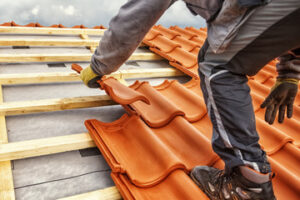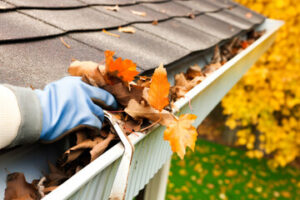Roof replacement is one of the most important home improvement projects homeowners can undertake. It protects their property and keeps them safe from the elements.

But a new roof doesn’t come cheap, so many homeowners struggle to decide whether to repair or replace. In some cases, the damage is so severe that repairs will not work. Visit https://www.northportflroofing.com to learn more.
Whether homeowners should repair or replace their roofs hinges on several factors, such as the extent of damage and the cost of each option. For example, if only one area of the roof is damaged, opting for repairs instead of replacing the whole roof may save them money up front. On the other hand, if a roof is nearing the end of its lifespan and has leaks in multiple locations, it may be more financially feasible to pay for a full replacement.
The type of roofing material used to make the new roof also makes a difference in costs. Asphalt shingles are the most affordable, while clay tiles and other premium materials can increase the price tag considerably. The size of the roof also influences the cost, as a larger house requires more materials and labor to install than a smaller home.
In addition to the cost of the roofing materials, homeowners need to factor in the cost of permits and disposal of the existing roof. Most counties require a permit before starting a new construction project, and this can add anywhere from $500 to $2,000 to the total cost of the roof.
Special features on a roof, like skylights, bay windows and chimneys, can also drive up the overall cost of a new roof. These items require specialized flashing and waterproofing cuts to be made. Additionally, if the roof must be cut around these items, it can also increase the installation time and labor costs.
Another component that drives up the roof replacement cost is the geographic location of the home. Certain climates, including Florida and the Pacific Northwest, require specialized materials that are designed to withstand heat and moisture. As such, these areas typically see higher roofing costs than other parts of the country.
Homeowners that are looking to reduce the upfront cost of a roof replacement can take advantage of various financing options, such as renovation loans, which allow homeowners to borrow against the anticipated value of their homes and then use those funds to pay for upgrades. In addition, homeowners should check with their homeowners insurance providers to see if the company covers a portion of the cost of a new roof as part of their standard homeowners’ policy.
Materials
A roofing job requires two things: workmanship and materials. The right materials can help the project run smoothly and efficiently, reducing both upfront and long-term costs.
The material that homeowners choose for their roofs depends largely on the type and slope of the roof. Basic asphalt shingles and PVC are common options for flat or low-sloped roofs, while cedar, slate, and metal are favored for traditional sloped roofs.
Durability is one of the most important factors when selecting a roofing material. If the home is in an area prone to high winds, it’s best to opt for a material that can resist damage from these forces. Metal roofs are a good choice for this situation because they’re strong and can last up to 50 years or more. Another option is a roof covered with clay or slate tiles, which also offer durability and are available in a wide variety of colors and patterns to complement any home.
For homeowners looking to stay within a budget, simple asphalt shingles or wood shakes are affordable options that won’t require much maintenance. Composite shingle or shake roofs are also an excellent choice because they resemble traditional shingles but have a longer lifespan and are resistant to mold, mildew, pests, and rot.
Those looking to reduce energy costs may want to consider a reflective roof, which can significantly cut down on cooling bills. Other energy-efficient options include PVC membranes or bitumen-based products. Finally, ridge and roof vents promote proper attic ventilation to avoid overheating and moisture buildup, which can lead to ice damming and water leaks.
Roof sheathing, which is typically made of plywood or OSB, provides a solid base for the rest of the roof covering. If this layer is weakened or damaged, it’s essential to replace it to prevent further problems and potential structural damage to the house.
Fascia boards, which attach to the ends of rafters or trusses, are also vital components for the roof frame and should be replaced if they’re rotting or showing signs of water damage. Homeowners should also be sure to replace or repair flashing, which seals and protects areas where the roof meets vertical surfaces such as chimneys or dormers.
Installation
A roof replacement is a major construction project that takes place directly above your house. It requires a lot of materials and painstaking labor. Some of the factors that impact its difficulty include the pitch (angle) of your roof, features like chimneys and skylights, the size of your roof, and the roofing material you choose.
The first step in the process is to tear off your old roof. The roofing contractor will use a dump trailer to dispose of the old materials. They will also remove the rubber or lead boots around sanitary stacks, lift off vents and other equipment, and carefully take up old shingles and other debris. The crew will also clean up gutters and the surrounding area.
After the old shingles are removed, the new roof will be installed. The team will lay a layer of felt or a breathable synthetic underlayment. This helps to protect the wood decking and prevent moisture from damaging the structure of your home. They will then cover the underlayment with a pre cut starter course of shingles and seal it with roof cement.
Next, they will install metal flashing around chimneys, projections, and valleys. This covers joints and prevents water leaks. They will also replace the drip edge along the sides of your roof.
After they’ve finished installing the new shingles, the roofing contractor will inspect the work. They will walk the roof a final time, paying close attention to any points at risk of leaks and making sure the job complies with all relevant regulations.
A properly installed roof protects your home from the elements, keeps it a comfortable temperature year-round, and increases its value when you’re ready to sell. If your roof is in poor condition, a full replacement is worth the investment. However, you should only hire a professional roofing contractor for this task. Attempting to do it yourself can be dangerous and costly. It can also devalue your property and make it more difficult to sell. In addition, it may not provide the same protection as a professionally-installed roof.
Warranty
It is important to have a solid understanding of what is covered by your warranty before starting any roof replacement project. Warranties vary significantly, but top-rated roofing contractors often offer comprehensive protection. This includes non-prorated coverage lasting up to 25 years for materials and a decade or more for workmanship. These extensive periods can help you save on costly repairs and maintenance down the road.
The type of roof warranty you choose will also have a significant impact on your overall cost. Standard manufacturer warranties typically only cover factory defects, while workmanship warranties from your contractor will cover installation errors. You may be able to purchase extended warranty packages for your new roof, but these are often subject to additional terms and conditions.
Some items in your roof will be void if you don’t conduct routine maintenance and inspections, so make sure to follow any guidelines outlined in your warranty. Also, some manufacturers require you to register your warranty in order for it to be valid, so be sure to follow any registration instructions carefully. It’s also a good idea to set a calendar reminder so you don’t forget to schedule regular maintenance and inspections.
Many homeowners find that their roofing warranties are void for a variety of reasons, including failing to keep up with routine maintenance and having different contractors work on your roof. You can avoid these common pitfalls by following the guidelines outlined in your warranty and being loyal to your contractor.
There are a few other things that can cause your warranty to be null and void, including time limits, wear and tear as the cause of failure, and expenses like labor and certain parts. If you have any questions about your roofing warranty, it’s a good idea to contact your roofing contractor or the manufacturer for clarification.
Depending on the manufacturer, roof warranties can be transferred between homeowners for a fee. This is a great way to pass down the value of your roof and to protect your investment. It’s a good idea to discuss this with your roofing contractor and the manufacturer in advance, as there will likely be transfer procedures you need to adhere to.



